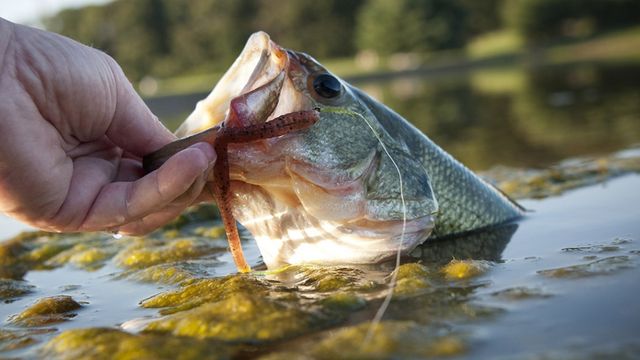
What Are "Feeder Creeks" And Why Should We Fish There?
Feeder creeks have all the right stuff for the making of a top-notch bass factory. Allow us to explain.
What Are Feeder Creeks?
Creeks flowing into lakes are known as feeder creeks, which provide consistently good bass fishing throughout the year. The section where the creek flows into a natural lake or manmade reservoir features a steady flow of oxygenated water into the lake providing bass with food and more comfortable water temperatures –cooler in the summer and warmer in the winter—than the main lake. The creeks also contain plenty of natural cover for bass including plenty of log laydowns, shallow vegetation and large rocks.Large feeder creeks on reservoirs widen out and become separate arms of the lake. These feeder creek arms contain a myriad of habitat to help bass reproduce and thrive. The arms usually contain several channel swings and good spawning flats close to those channel swings.Feeder creek arms tend to have off-colored water in the spring due to rain runoff. These arms also tend to warm up quicker than the main lake during the spring. The water temperature could be 3 to 4 degrees higher on the upper section of the feeder creek than the lower end where it intersects with the main lake.
Fishing Feeder Creeks During Prespawn
During the prespawn, bass start moving to the back of the feeder creek in the area where they stages on the last section of deep water whether it is a little drop or a bluff edge. Prespawn bass will also cruise gravel points anywhere from 1 to 7 feet deep.If the lake level is low during the prespawn, throw a suspending stickbait to catch bass and as the water continues to warm switch to a medium-diving crankbait. If heavy rains cause the creek to rise, target flooded shoreline bushes and flip a jig and plastic craw into the shallow cover. Slow-rolling a spinnerbait is another effective way to catch prespawn bass in the bushes.Prespawn bass will also pull out to the flats when the lake is high. Key on flats that have a bottom contour change of mud to sand mixed with a few rocks. You can catch plenty of bass then with a Carolina-rigged 6 or 8-inch plastic lizard until the fish move in to spawn.Look for nesting bass in the upper lake section of the feeder creek along the sandy flats with bushes and log laydowns or in short pockets loaded with bushes and wood off the main feeder creek channel. Key on the shallowest cover you can find. Productive lures for spawning bass in the feeder creeks include soft plastic jerkbaits and floating worms in low-water conditions. If the shoreline bushes are flooded, flip a jig-and-craw or run a willowleaf spinnerbait through the cover.After the spawn, bass in feeder creeks move to the breaks at the end of the flats. The breaks might run out to the 10- to 12-foot range and then break off into the old creek channel as deep as 40 to 50 feet. Bass will stage over a rock pile or couple of stumps on the breaks. A soft jerkbait or topwater walking bait will draw strikes from bass staging on the breaks. As the water continues to warm and bass move deeper, switch to Carolina rigging a French fry worm or cranking a deep-diving crankbait along the breaks.Dragging a Carolina-rigged French fry or deep cranking will continue to produce bass along the feeder creek channel drops during the heat of summer. Working a 3/4-ounce jigging spoon over brush piles along the drops of the flats will also produce bass. You can also run your boat as far up the creek as possible and catch bass around any current breaks with spinnerbaits, shallow-diving crankbaits, jigs or plastic worms.
Fishing Feeder Creeks In The Fall
During the fall, the key to finding bass in the feeder creeks is to look for pods of shad. Once you find the baitfish try waking a spinnerbait or run a buzz bait along the flats of the feeder creeks. On windy days, throw a lipless crankbait along the flats. If the weather is sunny and calm, flip a jig to log laydowns or bang a squarebill crankbait into the wood cover to trigger a reaction strike. A soft jerkbait is an effective lure to throw around the wood cover in the morning.Feeder creek bass fishing will key on the channel swings with transition banks that change from bluff to chunk rock during the winter. A finesse jig with a small craw trailer works best for feeder creek bass if the water is dirty. If the feeder creek is clear and the weather is cloudy and windy, switch to a suspending stickbait.If you like diversity in your fishing spots, feeder creeks give you a wide range of options to catch both numbers of bass and quality-size fish.
Updated October 1st, 2018 at 12:11 PM CT
